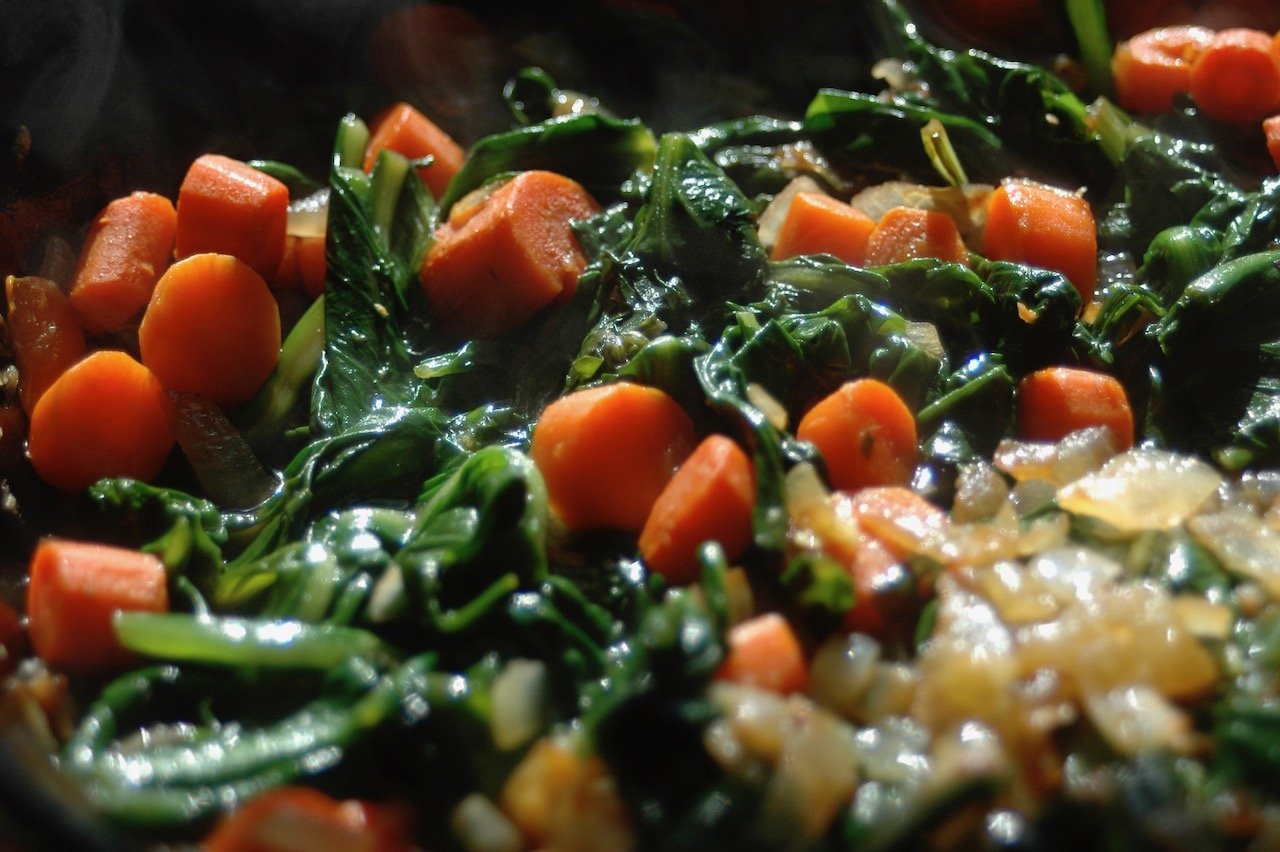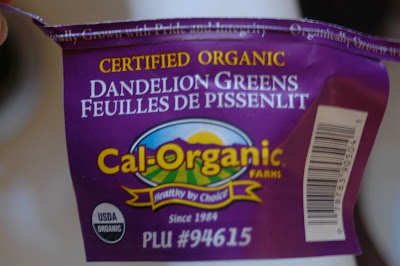stuck in the weeds

As long as we are digging around in the yard for our dinner, we may as well talk about another mighty weed, the dandelion. If you thought burdock was a powerhouse you could no longer live without, wait until you get a load of dandelion. Although our name from it proceeds from the French ("dents de lion," or lion's teeth, because of its serrated edges), its common French name is "pissenlit," which means, none too politely, "wet the bed." In case you think I am making this up, here is the tag that was on the bunch I just bought at the grocery store:

This is particularly amusing because it turns out that what I bought was in fact chicory, but as the mighty herb witch Susun Weed is careful to explain, they are sister plants and often confused, which is OK because they share many of the same benefits and all of the same guidelines for preparation.
I am not sure we have time to list all the fantastic things that dandelion can do for you. Though you can rest assured you are unlikely to wet your bed in any language, dandelion is a flusher. Like all bitter vegetables, it is a digestive, and a boon to your liver and other organs of sanitation. It is astoundingly high in calcium and the antioxidants A and C. Believe me, this is the proverbial tip of the iceberg, and if you just want to dip a toe in the waters here, try mincing up a few leaves of dandelion greens and adding them to your iceberg or other lettuces, particularly at the start of a meal, in order to make the most of all the digestive benefits.
You can also cook them, preferably in a cast-iron pot, and here again a mixture of dandelion and a milder green like spinach will ease you into the project if you're unsure how much bitter you want on your plate. Dandelion greens, which are long and slender and pointy and sometimes red-stemmed, are widely available in the market here now, as are fatter bunches that look more like spinach, labeled as above, and which might just be chicory. Bitterness varies greatly from bunch to bunch, but be aware the red-stemmed varieties tend to pack more of it.
sweet & sour greens
2 bunches dandelion greens, or a mixture of dandelion and spinach
2-3 carrots, peeled and coarsely diced
1 medium onion, diced
2-3 T olive oil
generous pinch of salt
1 t finely grated fresh ginger root
2t balsamic vinegar
1 t tamari or shoyu
Wash the greens very well (they tend to be sandy); trim and discard the tough ends and coarsely chop the leaves. If you are using spinach as well as dandelion, keep them separate for now as the spinach won't need to be blanched first.
Bring a medium pot of water to boil and salt it well. As the water heats, heat a skillet with the olive oil. Sauté the onion in the oil over low to medium heat. When the water boils and the onions are just beginning to brown, drop in the carrots and cook for about 2 minutes. Use a slotted spoon to pull the carrots from the water and drop them into the pan. Turn the heat up to medium, and continue to sauté; the carrots should lighten and the onions start to brown nicely. Drop the dandelion into the water now, and stir to submerge it all and make sure it wilts. Use the spoon to scoop the greens into the pan with the onions and carrots. Add the spinach, if you are using it; the moisture in the cooked greens should be enough to steam the spinach as you stir. Add the tamari and vinegar, and the grated ginger, and stir and cook a minute or two more until the mixture is well-coated in the slightly thickened sauce. If you did use a cast-iron pan, be sure to remove the cooked greens as soon as they are done.
The blanching water from the greens and carrots will add some dandelion power to the cooking of rice or other foods. I'm just saying. It fits comfortably down the drain, too.